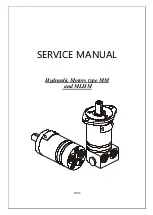
Lead
• Adopt suitable measures to avoid the formation of lead dust.
• Switch on extraction system.
• When working with lead or pastes that contain lead, avoid direct contact with the skin. Do not inhale
lead vapors.
• Wash hands after contact with lead or lead-containing substances.
Compressed air
Observe special safety precautions when working with compressed air:
• Unauthorized use of compressed air, e.g. forcing flammable liquids (hazard class AI, AII and B) out of
containers, risks causing an explosion.
• Wear goggles when blowing dirt off workpieces or blowing away swarf.
• Blowing compressed air into thin-walled containers (e.g. containers made of sheet metal, plastic or
glass) for drying purposes or to check for leaks risks bursting them.
• Pay special attention to the pressure in the compressed air system or pressure vessel.
• Assemblies or products to be connected must either be designed for that pressure, or, if the permis-
sible pressure is lower than the system pressure, a pressure reducing valve and safety valve (set to
the permissible pressure) must be connected between the assemblies/products and the system.
• Hose couplings and connections must be securely attached.
• Provide the snout of the air nozzle with a protective disk (e.g. rubber disk).
• First shut off compressed air lines before compressed air device is disconnected from the supply
line, or before device or tool is to be replaced.
• Carry out leak test in accordance with the specifications.
Paints and varnishes
• Observe the relevant safety data sheet for all materials.
• When painting in areas other than spray booths equipped with extractors, ensure good ventilation.
Make sure that neighboring work areas are not adversely affected.
• There must be no naked flames in the vicinity.
• No smoking.
• Observe fire prevention regulations.
• Always wear a mask providing protection against paint and solvent vapors.
Liquid nitrogen
• Observe the relevant safety data sheet for all materials.
• Work with liquid nitrogen may be carried out only by qualified personnel.
• Store liquid nitrogen only in small quantities and always in regulation containers (without gas-tight
caps).
• Avoid body contact (eyes, hands).
• Wear protective clothing, protective gloves, closed shoes and safety goggles.
• Make sure that working area is well ventilated.
• Avoid knocking or jolting the containers, valves and fittings or workpieces in any way.
Acids/alkaline solutions/urea (AdBlue
®
, DEF)
• Observe the relevant safety data sheet for all materials.
• When working with acids and alkaline solutions, wear goggles or face mask, gloves and protective
clothing.
• Do not inhale vapors.
• If urea solution is swallowed, rinse out mouth and drink plenty of water.
• If spilled onto clothing, remove the affected clothing immediately.
• After contact with skin, rinse affected parts of the body with plenty of water.
• Rinse eyes immediately with eye drops or clean tap water. Seek medical attention as soon as possi-
ble.
M015590/06E 2014-03
| Safety | 13
TIM-ID: 0000040536 - 005














































